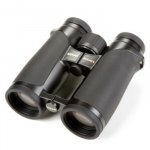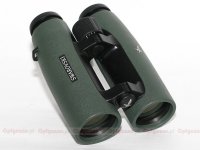Jan,
:stuck: You have a real penchant for twisting my words, which is why I am always reluctant to reply to your posts. I did not say that other brands can't use Schott glass, Swaro uses Schott glass.
My point had to do with why Swaro isn't suing Zeiss for making the SF while it did threaten Nikon over the EDG (even before the SV EL was launched).
Zeiss Foundation owns Schott and Swaro uses Schott glass (not exclusively, but among other glass), and therefore, the two companies have a closer relationship with each other than Swaro and Nikon. So I speculated that Swaro
might be less likely to threaten litigation against Zeiss because it uses Schott glass.
Then again, perhaps Zeiss learned from the EDG situation that they should contact Swaro first before making a bin that's close to the SV EL (and even designed by Dobler, who was the or one of the designers of the original EL) before going ahead with production of the SF, and make some kind of arrangment, so they didn't have to go through what Nikon did -- a complete redesign -- which Mike Freiberg said was "costly."
I'd be very interested to hear what Mike Jensen has to say about this if he's allowed to share that information.
But then you seemingly went off on a tangent about how big Schott was compared to Zeiss, and asked how many employees Zeiss has, so I found the answer to your question (which is slightly outdated since the website stated 24,000 employees and Mike said 25,000), and I posted the answer,
however, I don't see the relevancy to how many employees Zeiss has to my question about the Swaro/EDG litigation threat and the SF.
Brock
Brock,
Sorry you feel that way, but only o

in this unique special case I jumped to soon to my conclusion. My bad!! Sag's post on 957 and yours on 984 brought me to that idea.
What I should have said was: your speculation that Swarovski using Schott glass would make them, in your opninion, less confrontational towards Zeiss, is IMHO completely out of any reality, because Zeiss Optics is peanuts compared to Schott, but both are equal under the Foundation umbrella and Zeiss Optics has no leverage what so ever over Schott.
I got the idea that a lot of BF members seems to think that Zeiss Optics owns Schott and tried to get clear which position ones has in the Foundation.
This has indeed no relevancy towards Nikon (but somehow you allways succeed to bring the subject to Nikon:eat

.
Jan








